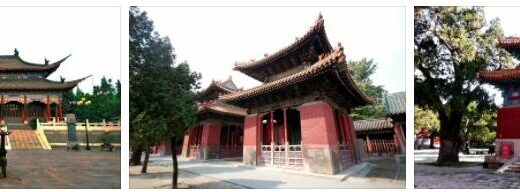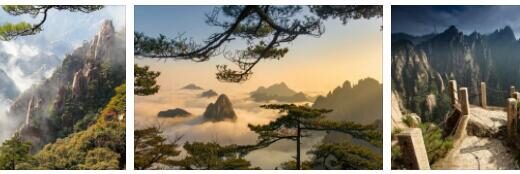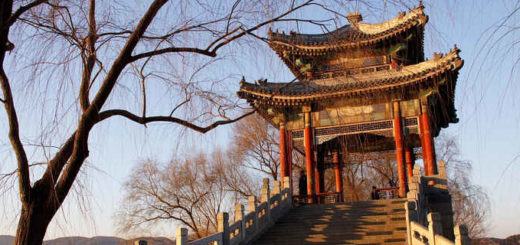World Heritages in China Part 4
Xanadu (World Heritage)
From Xanadu, today Shangdu in Inner Mongolia, the summer residence of the Mongol ruler Khubilai from the 13th century, only remnants of the wall remain.
Xanadu: facts
| Official title: | Xanadu – former capital of the Mongol ruler Kublai Khan |
| Cultural monument: | Remains of the legendary capital of the Mongol Empire of Kublai Khan, built in 1256; Starting point for expansion across all of China and establishment of the Yuan dynasty, which was dominant for a century (summer residence there); magnificent site with an area of 250 km² of the residence destroyed by the Chinese in 1359; Plant designed according to the principles of “Feng Shui” with mountains in the north and a river in the south; Remains of temples, palaces, tombs, nomadic camps and waterworks; legendary status worldwide as the starting point of Tibetan Buddhism and a place of religious freedom and discussion also with European scholars |
| Continent: | Asia |
| Country: | China |
| Location: | 270 km north of Beijing, Inner Mongolia, China |
| Appointment: | 2012 |
| Meaning: | Impressive example of the establishment and spread of a high culture; exceptional testimony to the integration of different ethnic groups of the Mongols and the Han Chinese; Document of the successful coexistence of nomadic and agricultural cultures; Starting point for the spread of Tibetan Buddhism |
Westsee Cultural Landscape (World Heritage)
The West Lake is the landmark and at the same time the heart of the city of Hangzhou. The eastern side of the lake borders the city, on three sides it is framed by mountains and tea plantations. The lake is famous for its natural beauty. The entire landscaping of the West Lake and its surroundings with temples, pagodas, pavilions, gardens and ornamental trees was also a model for park and lake landscapes in Japan and Korea.
Westsee cultural landscape: facts
| Official title: | West Lake cultural landscape near Hangzhou |
| Cultural monument: | Idyllic lake landscape in the east Chinese city of Hangzhou, framed on three sides by cloud-shrouded mountains, extended with artificially created islands and dams; harmoniously designed with a variety of temples, pagodas, pavilions, gardens and ornamental trees; Establishment of classical Chinese gardens based on the ideals of Chinese landscape design since the 9th century; after the 13th century ten poetically named places around the lake were established as an expression of the perfect harmony between man and nature; The lake and its surroundings have been the subject of extensive literary treatment |
| Continent: | Asia |
| Country: | China |
| Location: | Hangzhou, East China |
| Appointment: | 2011 |
| Meaning: | Unique harmonious connection between man and nature of great beauty; extraordinary aesthetic symbolization of the Chinese landscape ideal according to Buddhist principles; widely used model for landscaping in East Asia |
Danxia Landscapes (World Heritage)
According to constructmaterials, the Danxia Mountains are located in the subtropical area in the southwest of China. It is made of red sandstone that has weathered into sometimes bizarre figures. Numerous endangered animal and plant species live in the six award-winning landscapes.
Danxia landscapes: facts
| Official title: | Danxia landscapes |
| Natural monument: | Six landscape zones in the subtropical area of southwest China with typical red colored sandstone and spectacular natural column and tower formations in the rock, with gorges and waterfalls; rough landscape with subtropical rainforest in a warm and humid climate and diverse natural forms; Home to around 400 endemic and endemic animal and plant species |
| Continent: | Asia |
| Country: | China |
| Location: | Six areas in southwest China |
| Appointment: | 2010 |
| Meaning: | Extraordinary landscape of unique beauty; unique color contrast of the red rock with green rainforest and blue rivers and waterfalls; outstanding component of the landscape identity of China for the public and science |
Dengfeng Historic Sites (World Heritage)
The 1500 m high Songshang near the city of Dengfeng is one of the five sacred mountains of Daoism. At the foot of the mountain there are eight building complexes that are among the oldest religious sites in China. They reflect different ways of perceiving the “center of heaven and earth”.
Dengfeng Historic Sites: Facts
| Official title: | Historic sites of Dengfeng in the “center of heaven and earth” |
| Cultural monument: | On an area of 40 km² distributed holy sites of Chan Buddhism at and at the foot of the 1,500 m high sacred mountain Songshan (one of the five sacred mountains of Daoism) in the province of Henan; eight ensembles with buildings and facilities created in the course of nine dynasties (since 118 BC) (including various temples such as Zhongyue Temple, watchtowers Han Que, Taishi Que and Shaoshi Que, Zhougong sundial, built from the 13th century Dengfeng Observatory); Significance of the Songshan as an assumed place of transition between heaven and earth and thus as a place of encounter with the ancestors or of religious devotion |
| Continent: | Asia |
| Country: | China |
| Location: | Denfeng, Henan Province, central China |
| Appointment: | 2010 |
| Meaning: | Outstanding sites of Chinese Buddhism with extraordinary architecture; unique combination of secular and religious events and experiences in Chinese culture |



